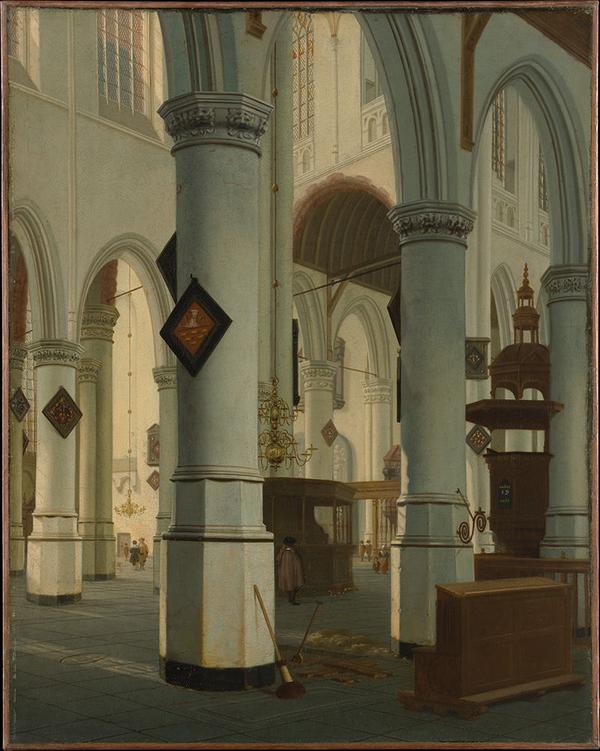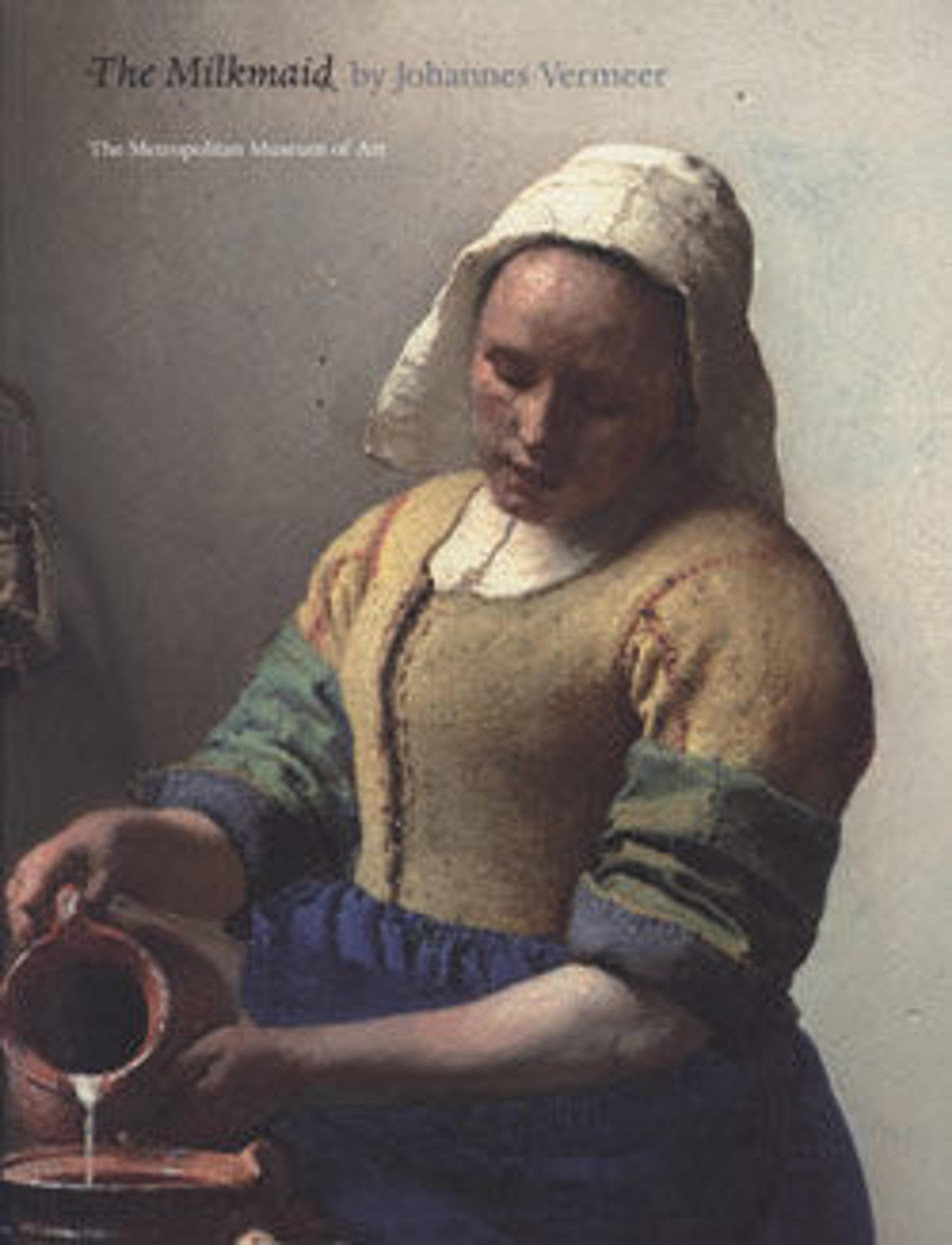Interior of the Oude Kerk, Delft
Painted from a vantage point to the west of Emmanuel de Witte’s depiction of the same church hanging nearby, Van Vliet’s picture gives a somewhat more accurate rendering of certain architectural motifs, such as the pulpit and the red bricks on the archway leading into the choir. But this image shares with De Witte’s the motif of a fresh grave, an unsettling reference to death amid everyday activity.
Artwork Details
- Title: Interior of the Oude Kerk, Delft
- Artist: Hendrick van Vliet (Dutch, Delft 1611/12–1675 Delft)
- Date: 1660
- Medium: Oil on canvas
- Dimensions: 32 1/2 x 26 in. (82.6 x 66 cm)
- Classification: Paintings
- Credit Line: Gift of Clarence Dillon, 1976
- Object Number: 1976.23.2
- Curatorial Department: European Paintings
Audio

5241. Emanuel De Witte, Interior of the Oude Kerk, Delft
NARRATOR: At first glance, this light-filled Gothic church might seem like a perfect place for quiet contemplation. But take another look. Curator Adam Eaker.
ADAM EAKER: The seventeenth-century Dutch church was where you met up with your neighbors, transact a business deal, teenagers could flirt clandestinely. It really is the space where all aspects of everyday life might be carried out.
NARRATOR: Emanuel de Witte’s Oude Kerk, or old church, in Delft, is an exceptionally detailed rendering of the space. It makes it easy to forget that he modified key elements to create the view he wanted. For example, he omitted the pulpit.
At the center, children draw on the base of a whitewashed column. To the right, sunlight falls on a dog lifting his leg to urinate.
ADAM EAKER: This is precisely the sort of anecdotal, even crude realism that really offended idealist writers about art, that now I think fascinates viewers of this kind of painting, and makes it seem so real, so convincing to us as a document of everyday life in the seventeenth century.
One of the key things to know about this chapter of Dutch history is that it began with an act of iconoclastic violence.
NARRATOR: In 1566, a wave of attacks spread through the Netherlands. Protestants staged riots as a reaction to the imposition of Spanish rule and the Catholic Church.
ADAM EAKER: The churches are stripped, the sculptures and paintings smashed, and the walls are whitewashed in an attempt to purify them according to the dictates of the Reformation.
NARRATOR: What does remain on the columns are coats of arms marking burial sites. At the very bottom of the painting is a freshly dug tomb—meant to remind us that this life is fleeting. We can often find this combination of high and low in one painting: the sobering message alongside irreverent details.
ADAM EAKER: When you get distracted by the dog urinating, you might overlook the open grave that’s right in the foreground, and in a sense, you’re enacting the experience of a kind of moral education that this picture is supposed to provide.
More Artwork
Research Resources
The Met provides unparalleled resources for research and welcomes an international community of students and scholars. The Met's Open Access API is where creators and researchers can connect to the The Met collection. Open Access data and public domain images are available for unrestricted commercial and noncommercial use without permission or fee.
To request images under copyright and other restrictions, please use this Image Request form.
Feedback
We continue to research and examine historical and cultural context for objects in The Met collection. If you have comments or questions about this object record, please contact us using the form below. The Museum looks forward to receiving your comments.
